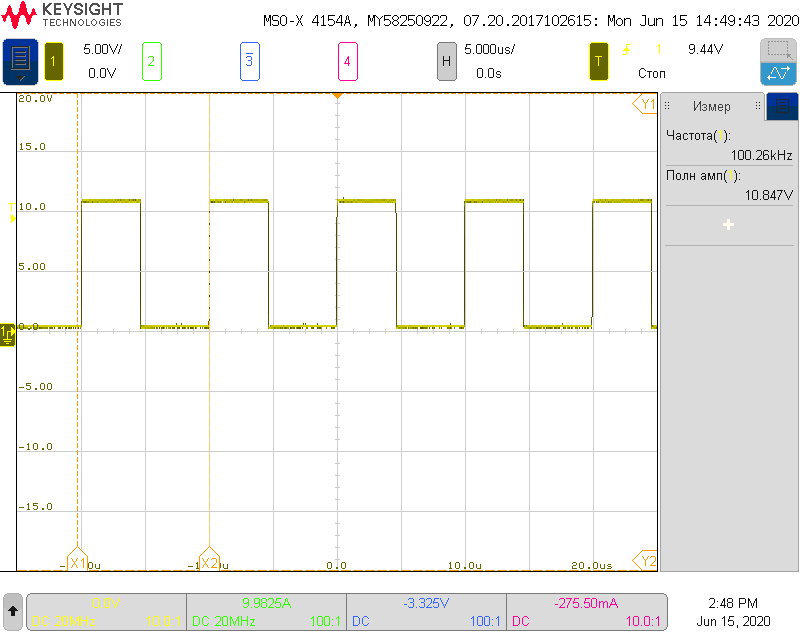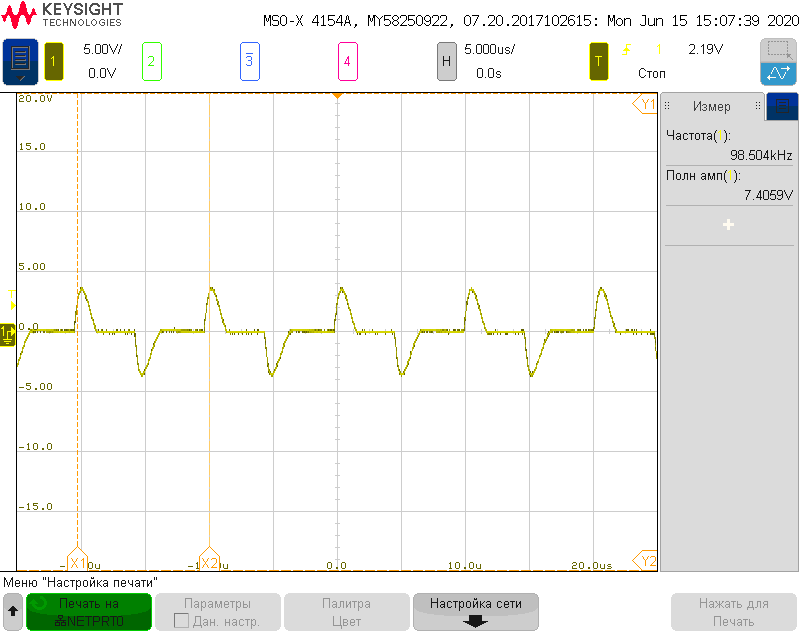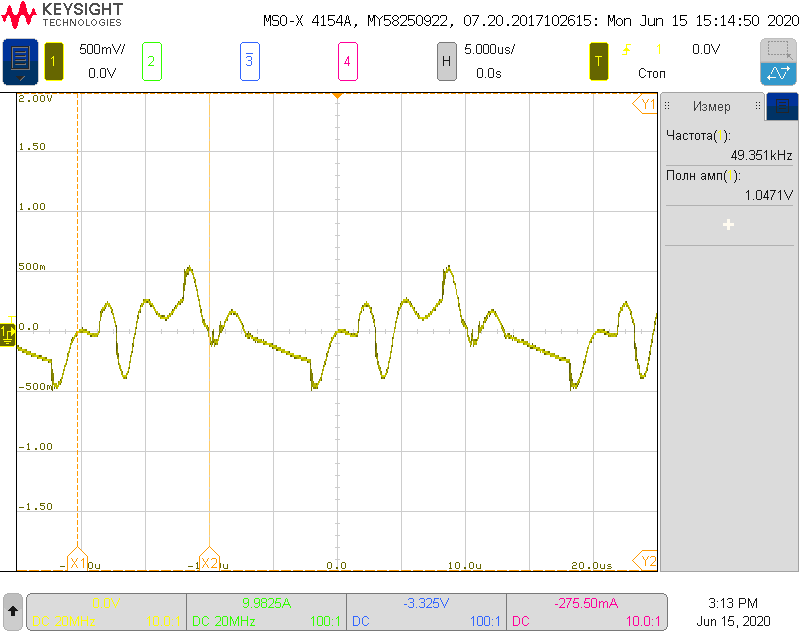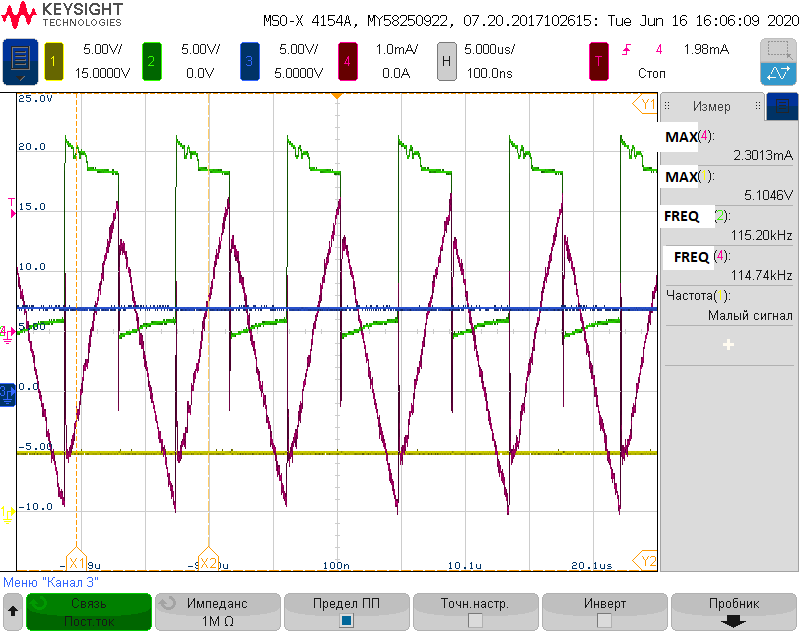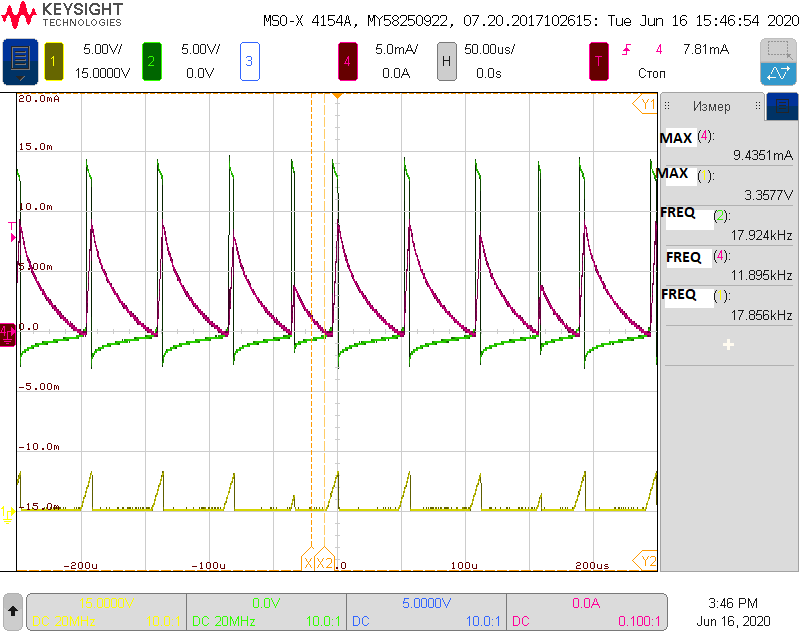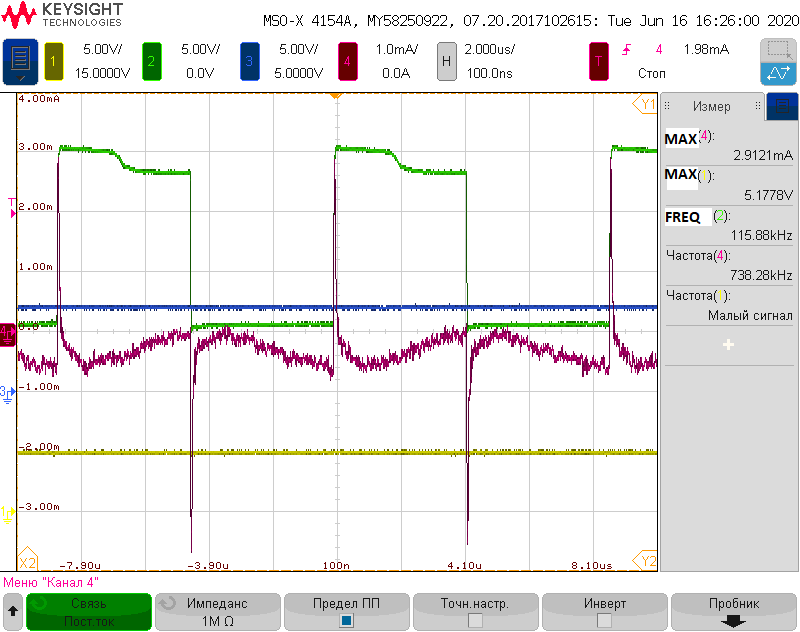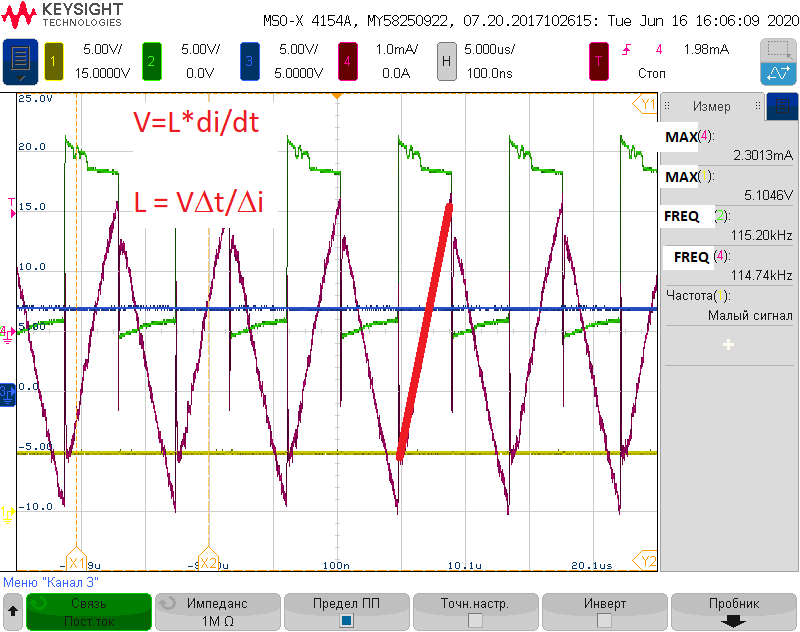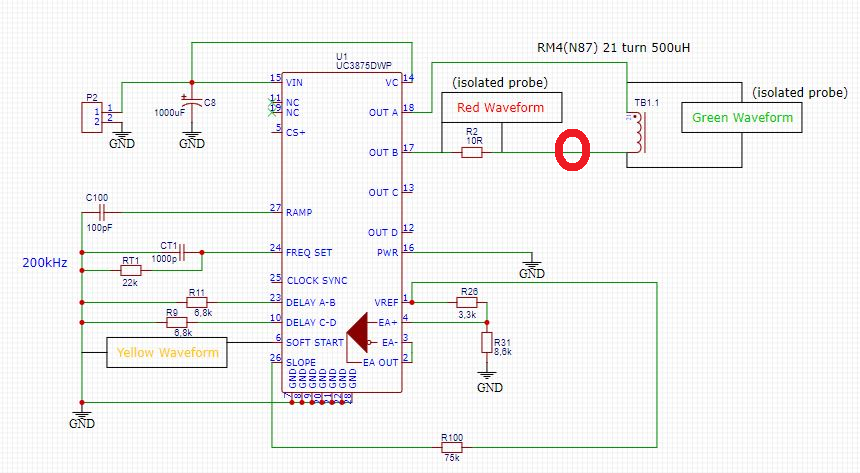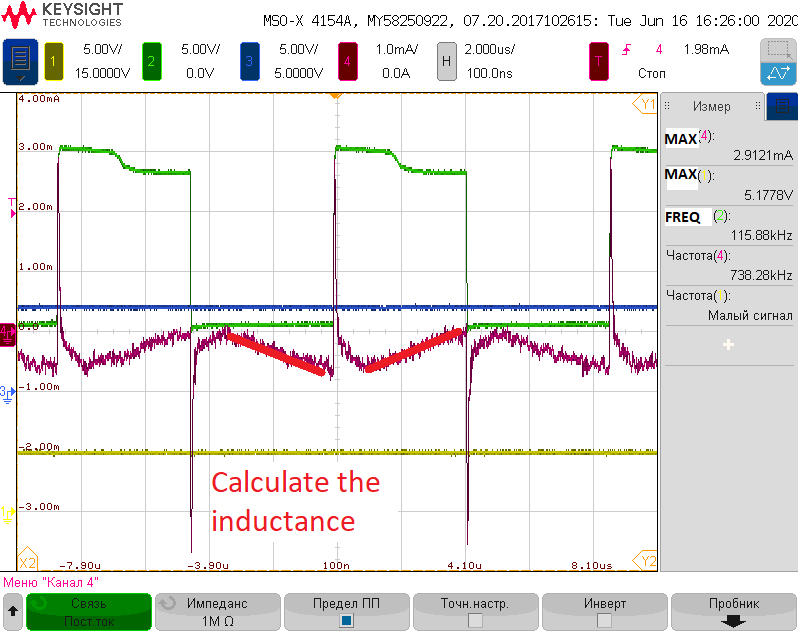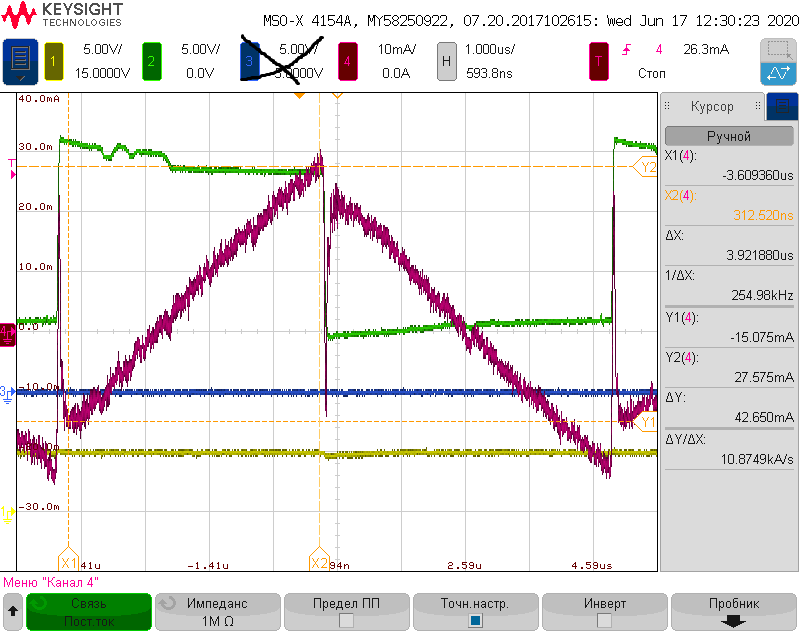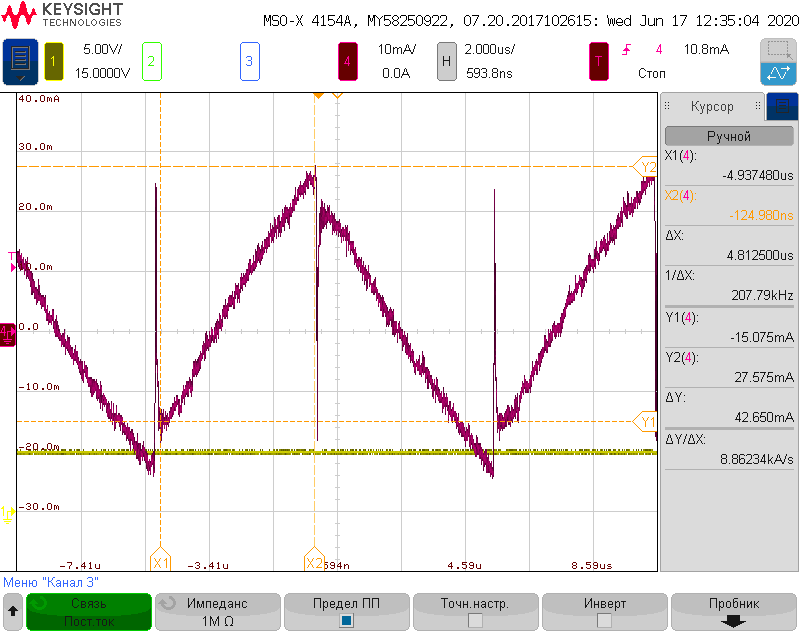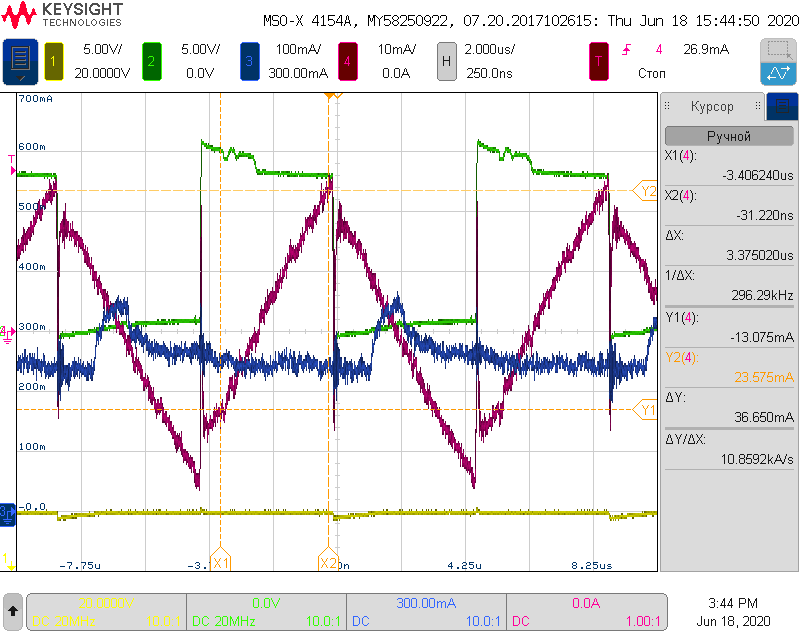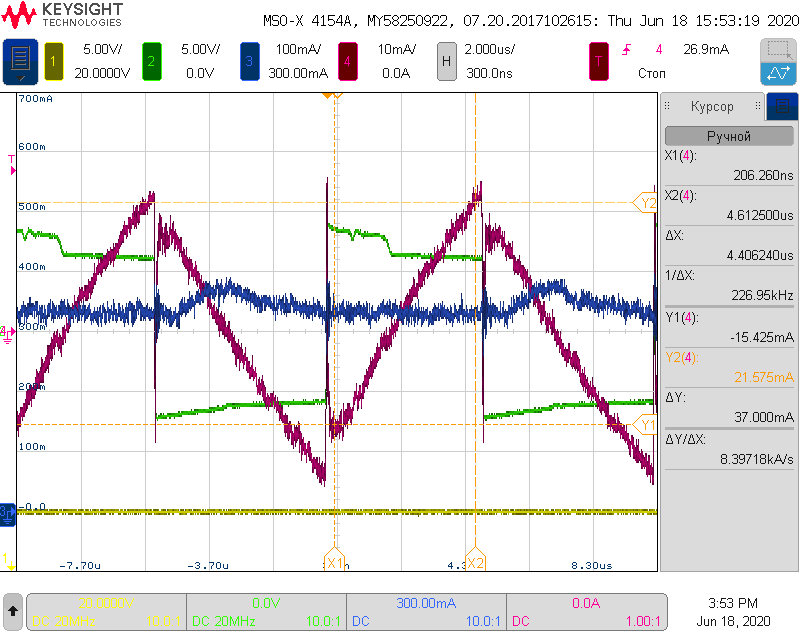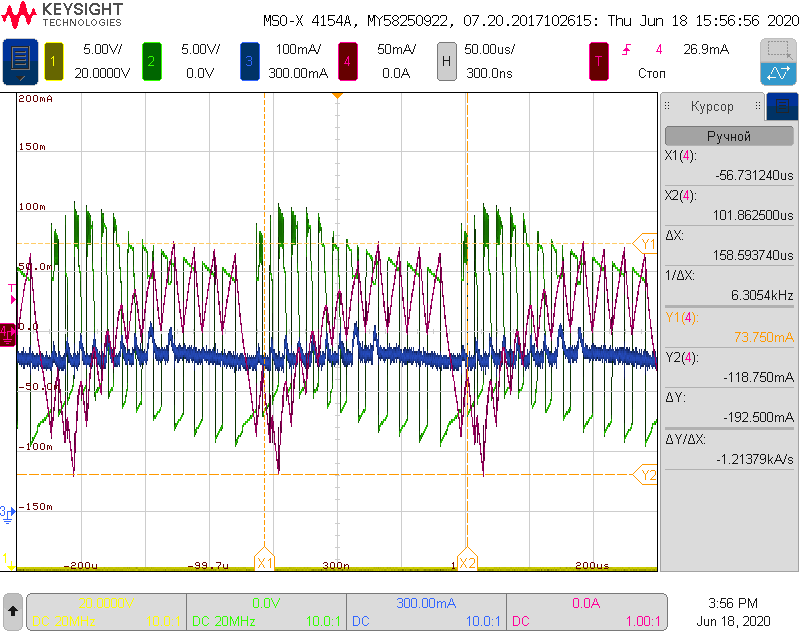Other Parts Discussed in Thread: UCC28951, UCC28950, UCC27324, UC2875
Hello! I an working now with PSFB using UC3875 and i know, it is quite old part but I have them in stock and I would like to use them, moreover, the question is more theoretical. I got question about MOSFET driving transformer configuration. I already have 4 transformers available and I want to control each transistor separately, as in the figure. But I ran into a problem when I connect only one channel (B), the current consumption increases significantly to about 180 mA (even if secondary of TB1 totally disconnected from QB1 R5 and R4 missing). When you connect all four channels instead, the PWM signal at the transformer outputs collapses. What could be the problem?
Transformer parameters are follow: core RM4, N87 material, ratio 1:1, Np=Ns=21 turn. Supply voltage 12VDC



